Jump to:
There’s so much to consider when putting up a greenhouse in the garden, and among these is its position. This isn’t just an “over here or right there” decision-making, though — it’s more than that. Think it through and let this guide help you where to locate it.
Position Your Greenhouse: Why It Matters and Where?
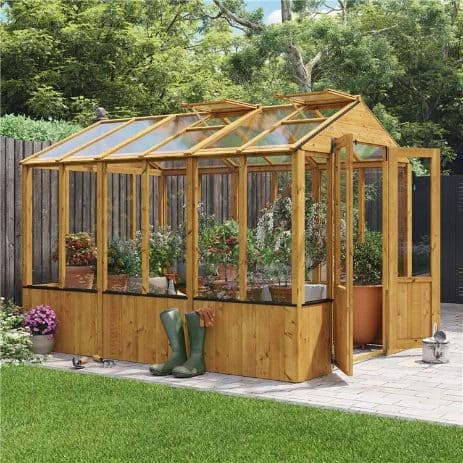
It matters because the location affects the temperature, light exposure, and humidity. Where you place your garden greenhouse, thus, can make all the difference.
The best spot is somewhere that gets maximum sunlight, especially during winter months. The greenhouse temperature should also be moderate and consistent day and night. Too much or too little moisture can lead to poor growth, so humidity levels should be controlled, too. Furthermore, the ideal placement must be:
- away from frost pockets
- sheltered from strong and cold winds
- is slightly elevated (but on a levelled surface)
- allows for convenience whenever you access it
Now it’s time to get into the factors to consider:
1. What type of greenhouse do you have?
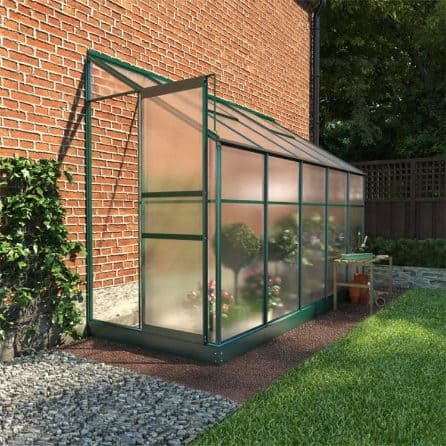
Not all garden greenhouses have the same structural design. However, the type can greatly affect where it needs to go. For instance, a freestanding greenhouse, such as the BillyOh Switch Apex Wooden Greenhouse. It features two sloped roofs and a ridge. As a stand-alone structure, you can place it wherever suitable on your property.
Another common design is the lean-to, appearing like it has been sliced in half. Consider the BillyOh Polycarbonate Lean-To Greenhouse as an example. It’s either attached or built against the wall of an existing building. Unlike a freestanding unit, it has only one slanted roof and shares a wall with another structure.
Hoop metal greenhouses, in contrast, are non-engineered structures and are often DIY-made. Instead of glass, they have rigid plastic stretched over the top. Since they don’t require permanent foundations, they are easy to move around. Hoop houses can be small or large, with a bigger option usually referred to as a high tunnel.
2. Consider what you’re growing
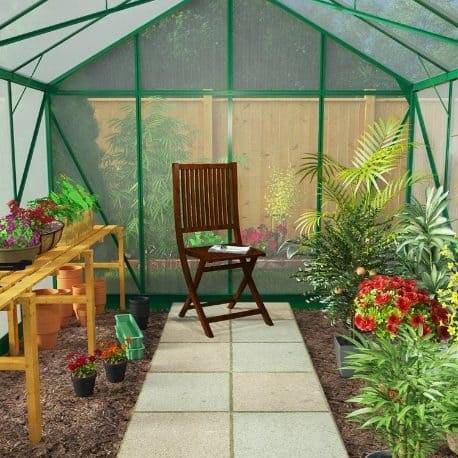
Success in greenhouse gardening relies on knowing what sunlight, temperature, and humidity levels plants need. Plants demanding full sun thrive best in areas directly exposed to sunlight for several hours a day. Meanwhile, those favouring partial shade benefit from shelter during peak daytime heat.
3. North, east, south or west?
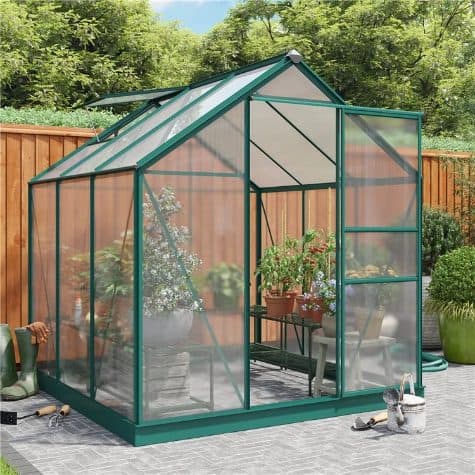
If you have a portable unit, you may configure or position your greenhouse as many times as you wish. If not, it’s worth giving it the best possible position, even if there may only be one site available.
- A south-facing side will receive the most sunlight throughout the day. This is particularly vital for plants that require a lot of light and warmth.
- A north-facing greenhouse may be better suited for cold-hardy greens like lettuce.
- An east-facing position will benefit your evergreens from the best morning sunlight.
- In a west-facing position, low-growing plants can soak up all the afternoon sunlight.
Top tips: During the darkest months, position it E-W to maximise light, ideally if the unit is portable. Go N-S if you only use your grow house in spring and summer for an equal amount of light. For lean-tos, the best location is south-facing – the supporting wall on the north side.
4. Check your garden condition
Not all gardens are created equal. Each can have its own microclimate, and it’s your job to assess yours before marking the spot.
Besides good sunlight and away from frost and harsh winds, level ground and good soil are crucial. Avoid low-lying areas if you have issues with water. And if it’s a sloped plot, you must build up the area to level off your greenhouse.
The unit should also be situated in an area that receives enough fresh air to prevent stagnant air. Make sure no tall trees can cast shadows, cooling the temperature. A good light transmission can also give you a stable environment year-round.
5. Is there enough walking and breathing space?
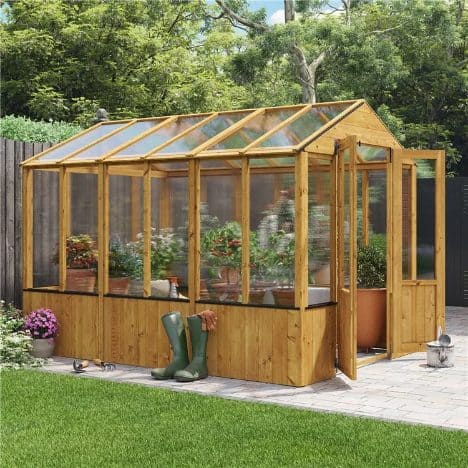
Ensure there is enough space for you to move around freely and tend to your plants both inside and outside. For the interior, leave at least 2-3 feet of walking space between the rows of plants. Consider the height and make sure there’s enough clearance for you to stand with ease.
For the outside perimeter, have at least one metre of space around the greenhouse. This will give you access to all sides, which is helpful in case a panel needs replacing. Don’t forget to leave room for falling snow so that you can shovel pathways, too.
6. ‘Near the house setup’ might be your best bet
Okay, there may already be a perfect spot at the bottom of your outdoor space. Although it meets all the ‘good light levels’ rules, it may not be practical if you need to be close to a water tap. The same goes if you have to access the mains for your greenhouse heaters. So, setting it closer to the house may be worthwhile.
If this is out of your option, you can collect rainwater to fill water butts instead of water taps. Paraffin heaters are also a good substitute for electric ones. A greenhouse with fleece should suffice for a low-cost insulation solution.
Round-up
Besides what to grow, of course, think about where to place it. For a quick recap, you’ll want a location with the following:
- The best sun-facing direction is suitable for the greenhouse type and intended plants.
- Good ground level, healthy soil, and no obstructing trees.
- Appropriate spacing both inside and outside the greenhouse.
- Adequate accessibility to water and electricity, if needed.
Once you determine the best way to position your wooden greenhouse, you’ll maximise your investment’s potential. If you haven’t found the right unit, let us assist you. Simply click the button below to explore our wide range:
If you have any further questions, please don’t hesitate to contact us at 01909 768840. Up next on your reading list: Should a Greenhouse be in Full Sun or Shade?





